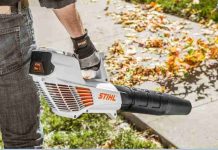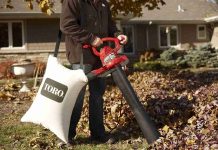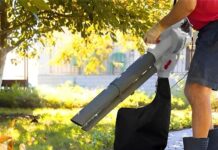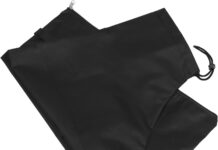Are you thinking about investing in a leaf blower? Wondering if it’s genuinely worth it? Let’s face it: leaves can quickly become a seasonal headache, cluttering our yards and making outdoor maintenance tedious. This article’ll explore the benefits of owning a leaf blower and discover why this handy tool might become your new best friend. Say goodbye to back-breaking raking and say hello to effortless leaf removal!
Noise Level
Benefits of Low Noise Level
When considering purchasing a leaf blower, one crucial factor to consider is the noise level. Opting for a leaf blower with a low noise level can provide several benefits. Firstly, it ensures a quieter environment, which is particularly important if you live in a neighborhood with noise restrictions or have nearby neighbors who may be sensitive to loud noises. A low noise level also means you can comfortably use the leaf blower for extended periods without causing any disturbance. Additionally, a quiet leaf blower can allow for more flexibility regarding when you can use it, as you won’t have to worry about disturbing others during early morning or late evening hours.
Considerations for Noise Level
While low noise levels may be desirable for some, it’s essential to consider your area’s specific regulations and noise restrictions before purchasing. Some neighborhoods or communities may have specific guidelines regarding noise levels, so it’s crucial to ensure that the leaf blower you choose complies with these regulations. Additionally, remember that leaf blowers with lower noise levels often generate less power than their louder counterparts. Therefore, it’s essential to strike a balance between noise level and the effectiveness of the leaf blower to ensure that it meets your specific needs.
Power Source
Electric Leaf Blowers
Electric leaf blowers are popular for those seeking a quieter and more eco-friendly option. They operate using electricity from an outlet and typically have a lower noise level than gas-powered blowers. Electric leaf blowers are generally easier to start and require less maintenance since they do not have a combustion engine. They are also lighter, making them more manageable for users of all ages and physical abilities. However, their range is limited by the length of the power cord, so consider the size of your property and the availability of outdoor power outlets before deciding on an electric leaf blower.
Gas-Powered Leaf Blowers
On the other hand, gas-powered leaf blowers are known for their high power and versatility. They are typically more powerful than electric leaf blowers and ideal for large properties or areas with heavy foliage. Gas-powered blowers offer greater mobility as they are not constrained by power cords, allowing you to reach remote areas without limitation. However, with this power comes increased noise levels and exhaust emissions, which can concern those seeking a quieter and more environmentally friendly option. The maintenance requirements for gas-powered blowers are also higher, with regular maintenance and fueling necessary.
Battery-Powered Leaf Blowers
Battery-powered leaf blowers are a convenient and increasingly popular option for homeowners. These blowers offer more mobility than electric blowers since they are not tethered to an outlet but are also quieter and produce fewer emissions than gas-powered blowers. The batteries used in these blowers typically provide enough runtime for medium-sized properties, although more significant properties may require additional battery packs or charging breaks. It’s essential to consider the voltage and capacity of the battery when selecting a battery-powered leaf blower, as these factors will directly impact the blower’s power and runtime.
Environmental Impact
Emissions
The environmental impact of leaf blowers, particularly gas-powered models, should be considered when evaluating your options. Gas-powered leaf blowers emit carbon monoxide and nitrous oxide, contributing to air pollution and climate change. These emissions can have adverse effects on both human health and the environment. In contrast, electric and battery-powered leaf blowers produce zero emissions during operation, making them more environmentally friendly choices. By opting for an electric or battery-powered leaf blower, you can reduce your carbon footprint and contribute to improving air quality.
Noise Pollution
Leaf blowers, especially gas-powered models, are notorious for their noise pollution. Their loud noise can disrupt the tranquility of residential neighborhoods and gardens, often annoying residents and wildlife. High noise levels can harm human health, leading to stress, hearing damage, and interference with sleep patterns. Choosing a leaf blower with a low noise level, such as an electric or battery-powered model, can significantly reduce noise pollution and promote a quieter and more peaceful outdoor environment.
Dust and Debris
When misused, leaf blowers can create dust and debris clouds that can settle on nearby surfaces and cause respiratory irritations. This is especially true for gas-powered blowers that generate powerful airflow. Electric and battery-powered blowers typically have lower airspeeds, reducing dust and debris disturbances. However, regardless of the blower type, it is essential to operate it carefully to prevent excessive dust and debris from being blown around. Consider directing the airflow away from people, animals, and sensitive areas to minimize the spread of pollutants.
Efficiency and Effectiveness
Clearing Large Areas
When clearing large areas, gas-powered leaf blowers take the lead regarding power and efficiency. Their strong airflow and high airspeed make quick work of dense foliage and heavy debris, allowing you to clear large spaces relatively quickly. Electric and battery-powered blowers, although not as powerful, can still effectively clear smaller to medium-sized areas. However, they may require more effort and multiple passes to achieve the same results as a gas-powered blower. Consider the size of your property and the foliage density when deciding which blower type will best suit your needs.
Cleaning Hard-to-Reach Areas
Leaf blowers can be indispensable when cleaning hard-to-reach areas, such as corners, crevices, and spaces under outdoor furniture. Gas-powered blowers often offer more versatility regarding nozzle attachments, allowing you to customize the airflow direction and concentrate the air on specific areas. This flexibility can make it easier to remove debris from tight spaces. While electric and battery-powered blowers may have limited nozzle options, they can still effectively reach and clear most hard-to-reach areas with proper maneuvering. Consider the layout of your garden or property and the areas that require attention to determine the most suitable blower for these tasks.
Mulching and Vacuuming Capability
Some leaf blowers come with mulching and vacuuming capabilities, which can be highly advantageous for homeowners. Mulching helps break down the collected leaves and debris into smaller pieces, allowing for easier composting or disposal. Conversely, vacuuming suctions the leaves and debris into a collection bag, eliminating the need for raking or manually collecting the debris. Gas-powered blowers typically have the highest mulching and vacuuming capacities, but electric and battery-powered blowers also offer these features on a smaller scale. Consider the amount and type of foliage in your garden and your preferences for disposal methods when deciding whether these capabilities are essential.
Cost
Initial Investment
Leaf blowers come at varying price points, depending on the type, brand, and features offered. Electric leaf blowers are generally the most budget-friendly option, with prices ranging from $30 to $100, making them an excellent choice for those on a tight budget. Battery-powered blowers fall into a higher price range, typically from $70 to $300, primarily due to the cost of the battery pack. Gas-powered blowers are the most expensive, ranging from $100 to $500 or more, reflecting their higher power and performance capabilities. Consider your budget and the features you require to find a leaf blower that offers the best value for your investment.
Maintenance and Operating Costs
In addition to the initial investment, it’s essential to consider the maintenance and operating costs associated with different types of leaf blowers. Electric blowers generally have the lowest maintenance requirements since they do not have a combustion engine, often only requiring occasional cleaning and cord inspection. Depending on usage, battery-powered blowers may require battery replacements every few years, which can significantly contribute to the overall cost. Gas-powered blowers require regular maintenance, including fueling, oil changes, and spark plug replacements, which can incur additional costs over time. Consider the long-term costs and maintenance requirements when evaluating the overall affordability of the leaf blower options.
Safety Considerations
Protective Gear
Safety should always be a priority when using a leaf blower. As with any outdoor tool, wearing appropriate protective gear is essential. Consider wearing safety glasses or goggles to protect your eyes from flying debris when operating a leaf blower. Ear protection, such as earmuffs or earplugs, is also recommended to mitigate the potential harm caused by loud noise. Additionally, wearing a face mask or a dust filter can help prevent inhaling dust and airborne particles. Gloves and sturdy footwear provide added protection for your hands and feet. Prioritize your safety by wearing the appropriate protective gear when using a leaf blower.
Proper Handling and Usage
To ensure safe and effective operation, handling and using a leaf blower correctly is crucial. Before using the blower, familiarize yourself with the specific manufacturer’s instructions and safety guidelines. Maintain a firm grip on the blower and keep a safe distance from people, animals, and fragile objects to prevent accidents and damage. Avoid using the blower in wet or slippery conditions to reduce the risk of slipping or losing control. It is also advisable to periodically check the blower for any loose parts, damage, or signs of wear. Adhering to safety precautions and using the blower responsibly can minimize potential risks and ensure a safe experience.
Time and Effort
Speed and Efficiency
Leaf blowers offer significant time and effort savings compared to traditional manual leaf removal methods, such as raking or using a broom. The powerful airflow generated by leaf blowers enables efficient and swift clearance of leaves and debris from large areas. With their high velocity and air volume, gas-powered blowers can complete these tasks more rapidly than electric or battery-powered blowers. However, electric and battery-powered blowers still save considerable time and effort, particularly for smaller to medium-sized properties. Using a leaf blower can significantly reduce the time spent on manual labor and complete your leaf-clearing tasks more efficiently.
Physical Effort and Fatigue
When considering the physical effort required for leaf removal, leaf blowers can substantially alleviate the strain and fatigue of strenuous manual methods. Raking or using a broom often requires continuous bending, lifting, and repetitive sweeping motions, leading to muscle fatigue and discomfort, especially for individuals with physical limitations. Using a leaf blower, you can enjoy a more upright posture and minimize the strain on your back, arms, and shoulders. However, it’s important to note that heavier gas-powered blowers may still require some physical exertion, particularly during extended periods of use. Consider your physical health and capabilities when evaluating the physical demands of different leaf blowers.
Alternative Methods
Raking
Raking remains one of the most common and traditional leaf removal methods, offering its own advantages. Raking allows for a more hands-on approach, giving you direct control over the direction and placement of leaves. It can also be a great form of physical exercise and help you stay connected with nature.
Raking is a quiet method, making it suitable for noise-sensitive environments or when using a leaf blower is not feasible. However, it’s important to note that raking can be time-consuming and physically demanding, especially for more significant properties or areas with dense foliage. When choosing between raking and using a leaf blower, consider the time, effort, and physical capabilities required for each method.
Using a Broom
Using a broom is another manual alternative to leaf blowers, and it offers advantages similar to raking. Brooms are lightweight, portable, and do not produce noise or emissions. Sweeping leaves with a broom can be a more precise method, allowing you to target specific areas and maneuver around obstacles easily.
Additionally, using a broom gives you control over the intensity and speed of the cleaning process. However, like raking, using a broom can be physically demanding and time-consuming, especially for larger areas or properties. It may also be less effective at removing wet, heavy leaves or debris stuck in crevices. Consider your preferences, physical abilities, and the task scale when choosing between a broom and a leaf blower.
Hiring Professional Services
Hiring professional services may be a viable option for those who prefer a hands-off approach or have extensive leaf-clearing needs. Professional landscaping or gardening companies can provide efficient and thorough leaf removal services tailored to your requirements.
These services often utilize commercial-grade leaf blowers, ensuring quick and effective results. Hiring professionals can save you time and effort, particularly for more significant properties or areas with intricate landscaping. However, it’s essential to consider the associated costs and scheduling availability when outsourcing this task. Evaluate your budget, time availability, and personal preferences before hiring professional services or investing in a leaf blower.
Storage and Portability
Compact Design
Regarding storage and portability, leaf blowers come in different sizes and designs. Electric and battery-powered blowers are generally more compact and lightweight than gas-powered ones. Their sleek designs and smaller frames make them easier to store in a shed, garage, or other limited spaces. Gas-powered blowers, though more powerful, tend to be bulkier and require additional storage space. Consider your property’s available storage areas and specific storage requirements before selecting a leaf blower. Opting for a compact design can ensure that the blower fits comfortably in your storage space and is easily accessible when needed.
Storage Space
In addition to the physical dimensions of the leaf blower, it’s essential to consider the storage requirements for accessories and fuel. Gas-powered blowers typically require fuel, such as gasoline or a fuel-oil mixture, which needs to be stored safely and securely in a well-ventilated area. Accessories such as additional nozzles or vacuum bags should also be considered when assessing storage space requirements.
Electric and battery-powered blowers generally have fewer storage considerations, as they do not require fuel or have extensive accessory requirements. However, storing the batteries or chargers in a cool and dry area is essential to ensure longevity and performance.
Weight and Maneuverability
Leaf blowers’ weight and maneuverability significantly impact the ease of use and comfort during operation. Electric and battery-powered blowers are typically lighter in weight than gas-powered models, making them more manageable for extended periods of use. Lighter blowers are also easier to maneuver around obstacles, trees, and narrow spaces.
While heavier, gas-powered blowers may still offer maneuverability through backpack or wheeled designs, allowing for more balanced weight distribution and straightforward navigation. Additionally, consider the handle ergonomics and adjustability when evaluating a leaf blower’s comfort and ease of use.
Personal Preferences and Needs
Garden Size and Layout
Your garden size and layout are crucial in determining the most suitable leaf blower. If you have a small to medium-sized garden with minimal foliage, an electric or battery-powered blower may be a practical choice due to its convenience, lower noise levels, and ease of storage. A gas-powered blower’s increased power and range may be necessary to clear the space efficiently for more significant properties with dense foliage. Assess the size of your garden, the amount of foliage, and any unique landscaping features or obstacles to help guide your decision.
Personal Health and Abilities
Your health and physical abilities should also be considered when selecting a leaf blower. If you have any physical limitations or conditions affecting your mobility or strength, opting for a lighter electric or battery-powered blower may be more suitable. These blowers require less physical effort and can be more easily maneuvered, minimizing strain and fatigue. While more robust, gas-powered blowers maybe heavier and require more physical exertion. Consider your overall health, strength, and any specific physical limitations when evaluating the physical demands of each blower type.
Desired Level of Cleanliness
The desired level of cleanliness and maintenance in your garden is another factor to consider. If you prefer a pristine, manicured appearance with no trace of leaves or debris, then a powerful gas-powered blower may be your best option.
The high air volume and airspeed of gas blowers can effectively remove even the smallest debris particles. Electric and battery-powered blowers may offer satisfactory results for moderate cleaning needs but may leave some acceptable debris behind. Assess your standards and expectations for cleanliness to determine the blower type that aligns with your desired level of tidiness.
In conclusion, choosing the suitable leaf blower requires careful consideration of several factors. The noise level, power source, environmental impact, efficiency and effectiveness, cost, safety considerations, time and effort savings, alternative methods, storage and portability, and personal preferences and needs all come into play when deciding.
By thoroughly evaluating each aspect and weighing the pros and cons, you can choose a leaf blower that suits your specific requirements, allowing you to maintain a clean and presentable outdoor space efficiently and effectively.



































